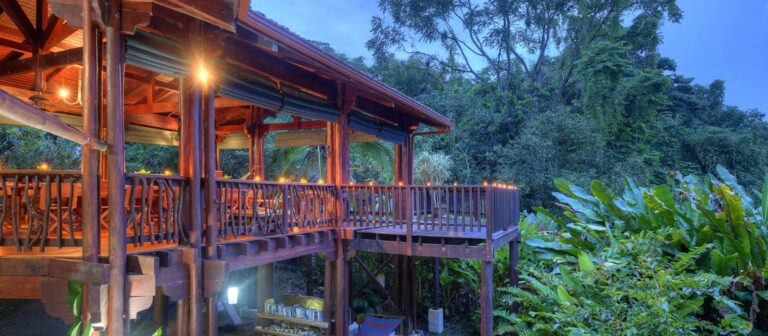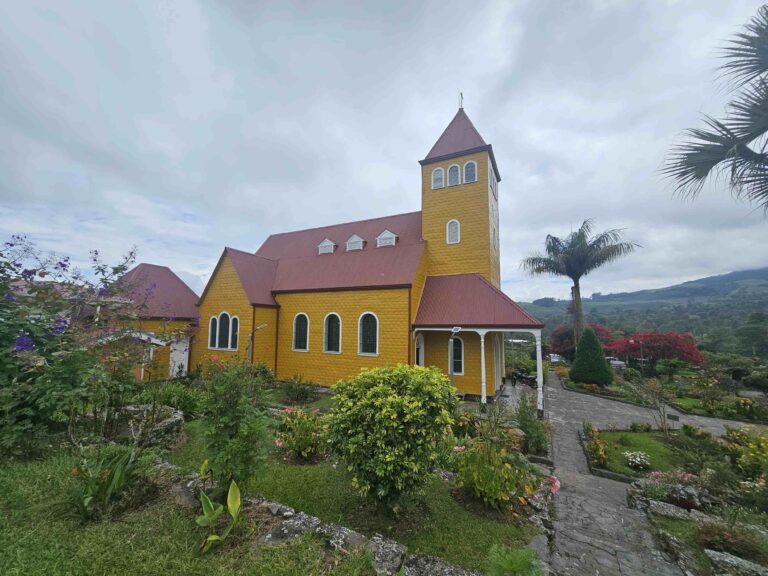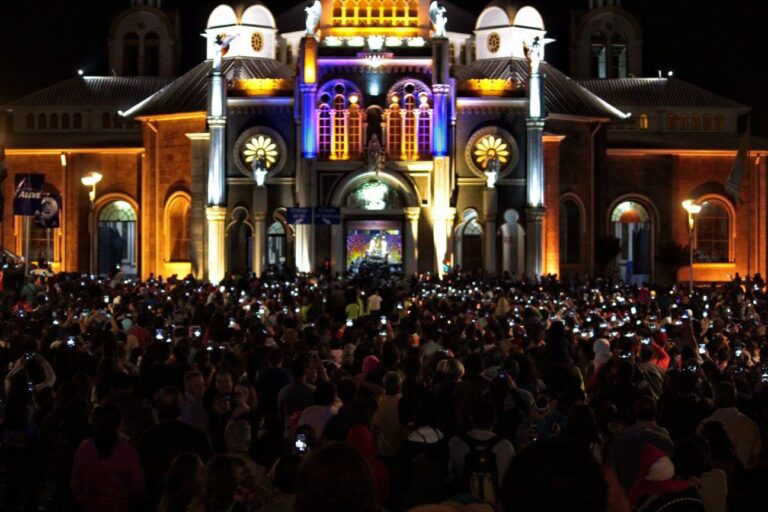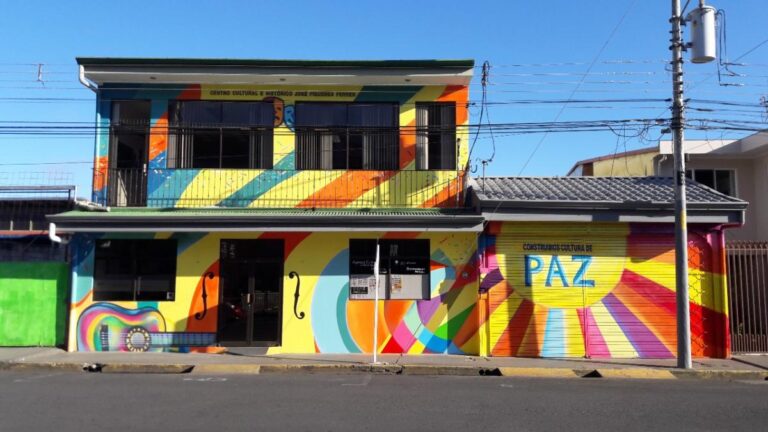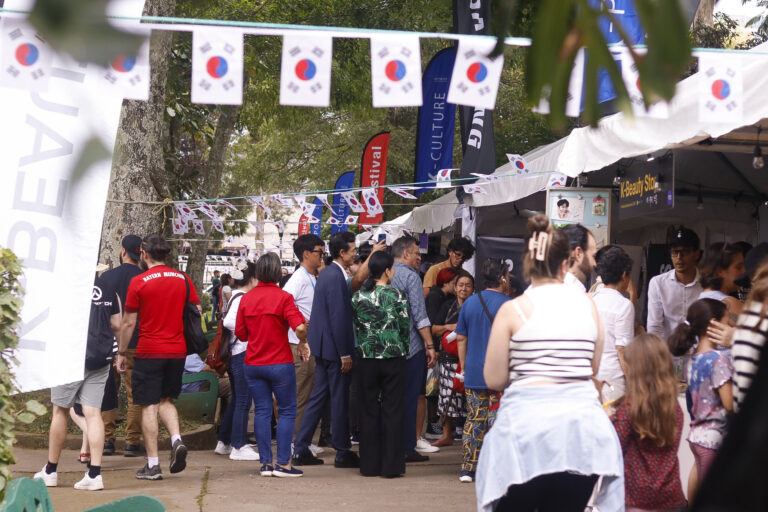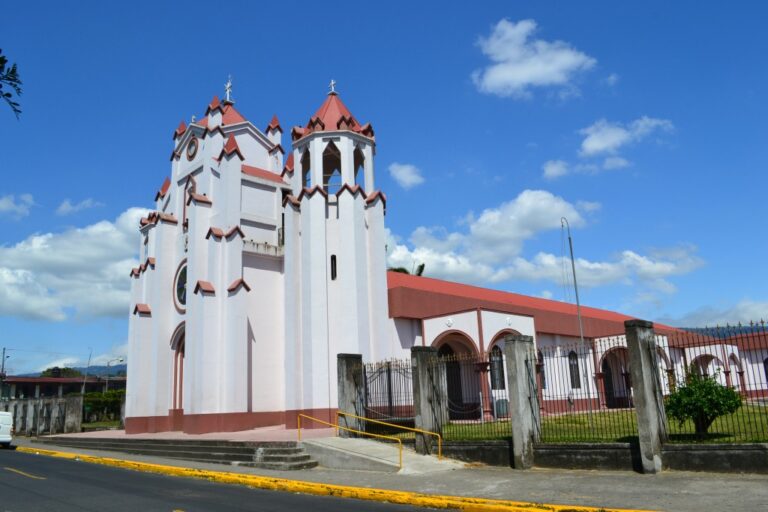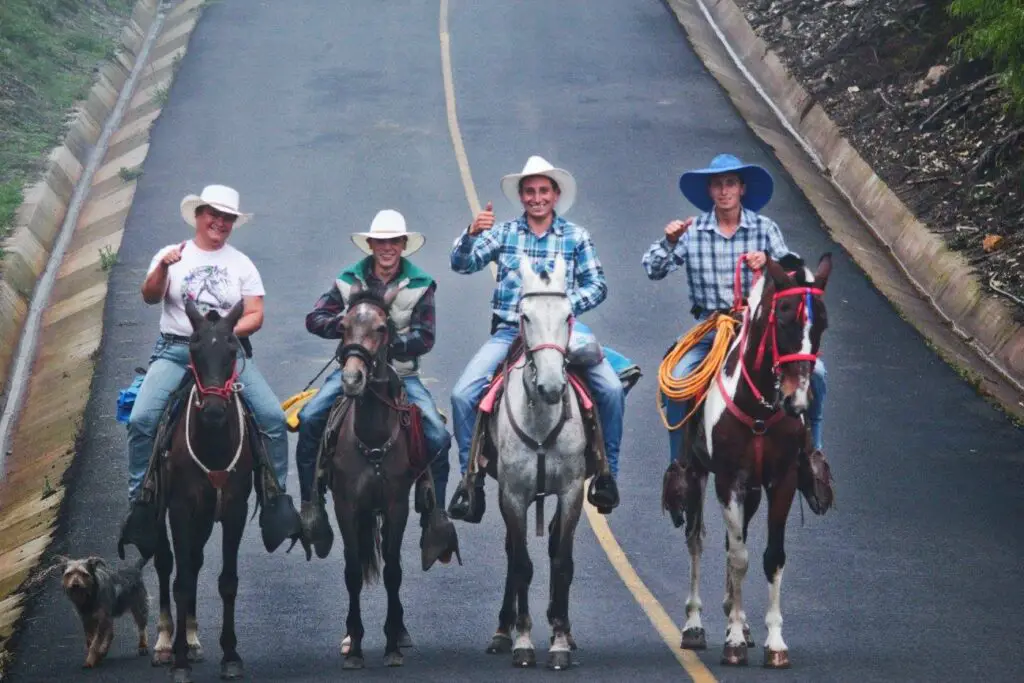Every August, the roads leading to Costa Rica’s old capital, Cartago, are transformed. Hundreds of thousands, sometimes millions, of people of all ages and social backgrounds walk, moved by a force that transcends the physical. They are not going to a concert or a sporting event; they are heading to a sacred destination to meet their spiritual mother, a small, humble stone effigy affectionately known as “La Negrita.” Her home is the majestic Basilica of Our Lady of the Angels, the spiritual heart of the nation.
This article is a journey through time to explore the fascinating legend of its origin in the colonial era, the monumental challenges of its construction, and why, after nearly four centuries, this temple has become an undeniable symbol of Costa Rican faith and identity.
The Miraculous Finding: The Legend of Juana Pereira (1635)
To understand the Basilica, we must first transport ourselves to the Cartago of 1635. It was a colonial society, rigidly stratified, with deep social and racial divisions. On the outskirts of the center, which was reserved for the Spanish, was the “Puebla de los Pardos,” a neighborhood inhabited by mestizos and mulattos. It was in this humble corner of the Spanish empire that Costa Rica’s history would change forever.
Tradition introduces us to Juana Pereira, a young parda (a woman of mixed race) who, like every other day, went out to gather firewood. On August 2, 1635, while she was by a spring, her eyes fell upon a small, dark stone doll, no more than 20 centimeters tall, depicting a woman holding a child. She found it on a large rock. Delighted with her discovery, she picked it up and kept it in a small chest in her house.
The next day, to her surprise, Juana found the same image on the same rock again. Thinking it was a different one, she picked it up, but upon arriving home, she discovered that the first one she had stored was gone. The event repeated a third time. Confused and frightened, she decided to take the image to the local priest, Father Alonso de Sandoval.
The priest, after hearing her story, placed the statuette in the church’s tabernacle. But the miracle was far from over. The next morning, the image had disappeared from the tabernacle and was once again found by Juana on the same rock by the spring. This event was interpreted as an unequivocal sign: the Virgin wished to remain in the Puebla de los Pardos and for a temple to be built for her in that specific place, symbolically uniting all social groups under her mantle. The small image, carved from a mixture of volcanic rocks such as lherzolite, gabbro, and dunite, has since received the popular and affectionate nickname “La Negrita” (The Little Black One).
From Hermitage to Basilica: A Temple Forged by Faith and Earthquakes
The news of the miracle spread, and around 1639, the first hermitage was built in honor of the Virgin at the site of the finding. Throughout the 17th, 18th, and 19th centuries, that modest chapel was replaced by increasingly larger and more ornate temples. However, the history of this sanctuary would be marked not only by the devotion of its people but also by the fury of nature.
Costa Rica is a land of volcanoes and tremors, and the Basilica was not immune. Several earthquakes damaged the structures over the years, but the devastating blow came on the morning of May 4, 1910. The Santa Mónica earthquake, with an estimated magnitude of 6.4, shook Cartago and reduced the imposing church that stood at that time to rubble.
Far from giving up, the Costa Rican people decided to build a new temple, one that would not only be a worthy home for their Patroness but also a monument capable of withstanding the ravages of the earth. The construction of the current basilica began in 1912 under the direction of the Catalan architect Lluís Llach Llagostera. The choice of the Byzantine architectural style was no accident; its thick walls, rounded arches, and robust structure, crowned by an imposing central dome, offered the necessary solidity for an earthquake-resistant building.
After twelve years of hard work, financed largely by popular donations, the temple was completed in 1924. Its importance was recognized worldwide when, in 1935, Pope Pius XI elevated it to the rank of a Minor Basilica, consolidating its status as the National Shrine of Costa Rica.
Architecture and Symbols: A Tour of the Interior
Visiting the Basilica is an experience that captivates the senses and the spirit. Its imposing gray stone facade gives way to a solemn and light-filled interior.
- The Main Altar: Here, in a monstrance of gold and precious stones, the small, original image of La Negrita is kept and venerated.
- The Stained-Glass Windows: The colorful windows that adorn the walls are not merely decorative. They narrate the story of the image’s discovery, as well as passages from the life of Jesus and the Virgin Mary, filling the space with a celestial light.
- The Holy Water Font: Just below the main altar, down a set of stairs, lies the heart of the sanctuary: the rock and the spring where it all began. The faithful wait patiently in line to touch the stone and collect water from the font, which is believed to have healing properties.
- The Room of Promises (Ex-votos): Perhaps one of the most moving places is an adjoining room where the walls are covered in gratitude. Here, the faithful leave thousands of “ex-votos”: small gold and silver charms in the shape of body parts, medals, university degrees, locks of hair, letters, and photographs. Each object tells a personal story of a prayer answered, a miracle received, or a promise fulfilled.
The Romería: The Heart of a Nation on the Move
The ultimate expression of devotion to La Negrita is the Romería. Every year, in the days leading up to August 2nd, the country sets out on foot. It is a massive pilgrimage where Costa Ricans walk from the farthest points of the national territory to the Basilica.
This act of faith is much more than a simple walk. For many, it is the fulfillment of a promise, an act of sacrifice to ask for a favor, or a way to give thanks for blessings received. It is a tradition that unites families, friends, and strangers in a shared journey of effort and hope. The ceremony on August 2nd, with the traditional “pasada” (passage) of the image to the Cathedral of Cartago, is the culmination of this national celebration.
More Than a Building, a Symbol of Identity
The Basilica of Our Lady of the Angels is much more than stone and cement. It was born from a legend of humility in a marginalized neighborhood, forged with the resilience of a people who refused to be defeated by natural disasters, and is kept alive by a tradition that unites an entire nation.
It is the home of the Patroness of Costa Rica, a beacon of hope, and a constant reminder of the faith, perseverance, and unity that define the Costa Rican people. If you ever have the opportunity, I invite you to visit it. Whether as a pilgrim in the Romería or as a curious traveler, walking through its halls is to experience its unique atmosphere and be part of a story that continues to be written every day.







